World Bank in India
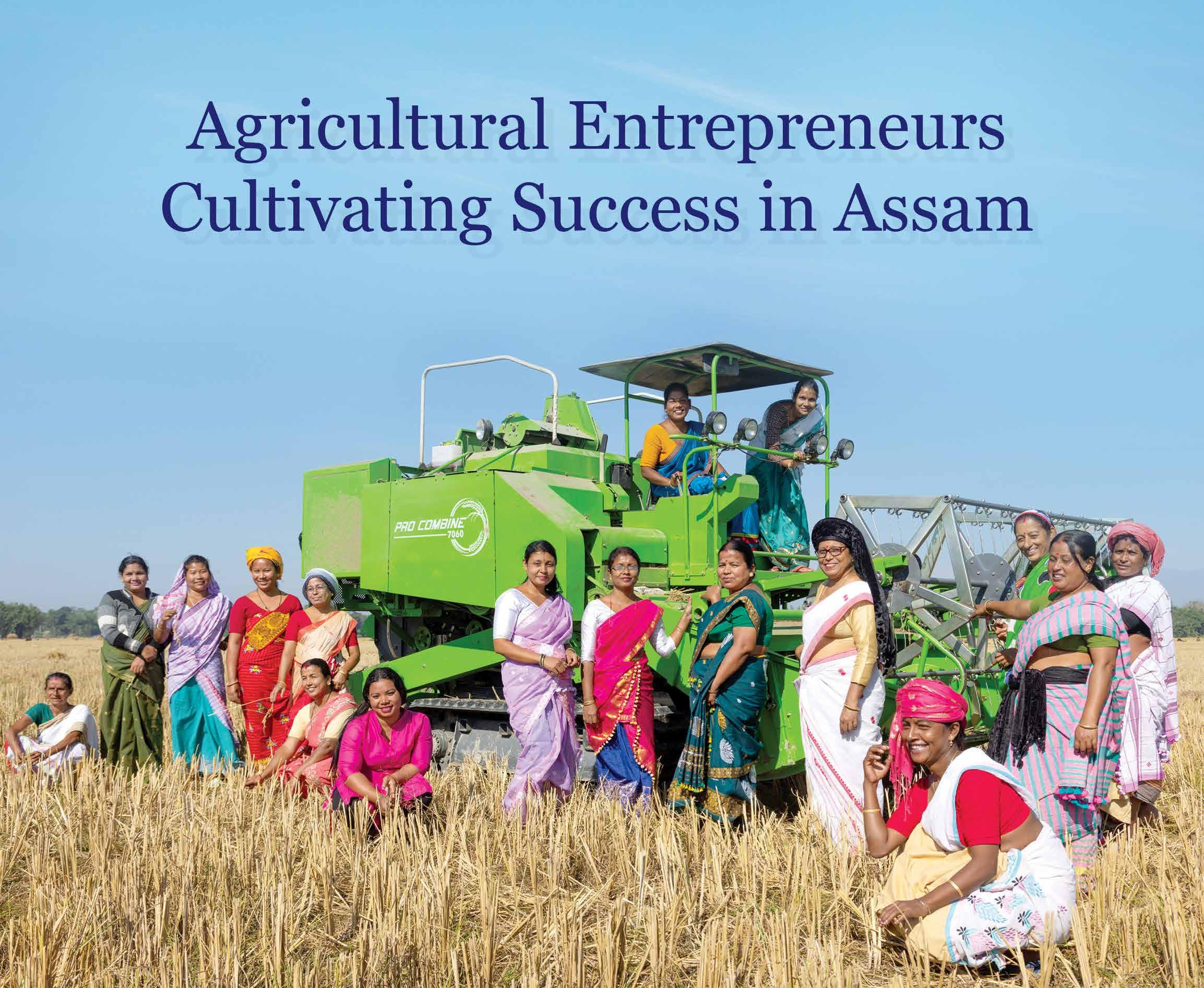
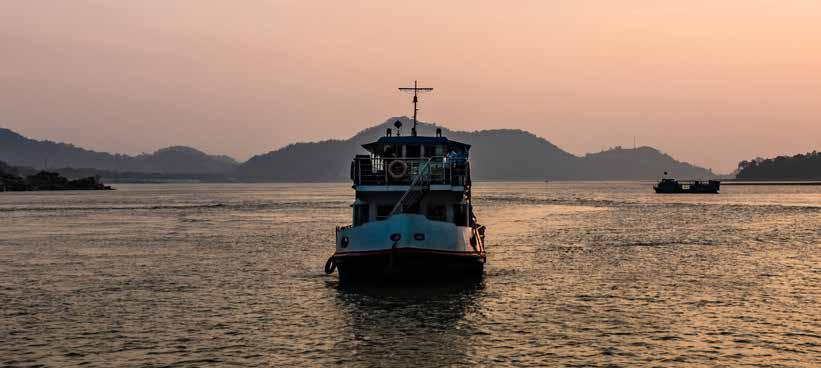


26 / No. 2 February 2024 Publications Projects 17 Regional Dialogue 12 19
Vol

dgkuh fgUnh esa
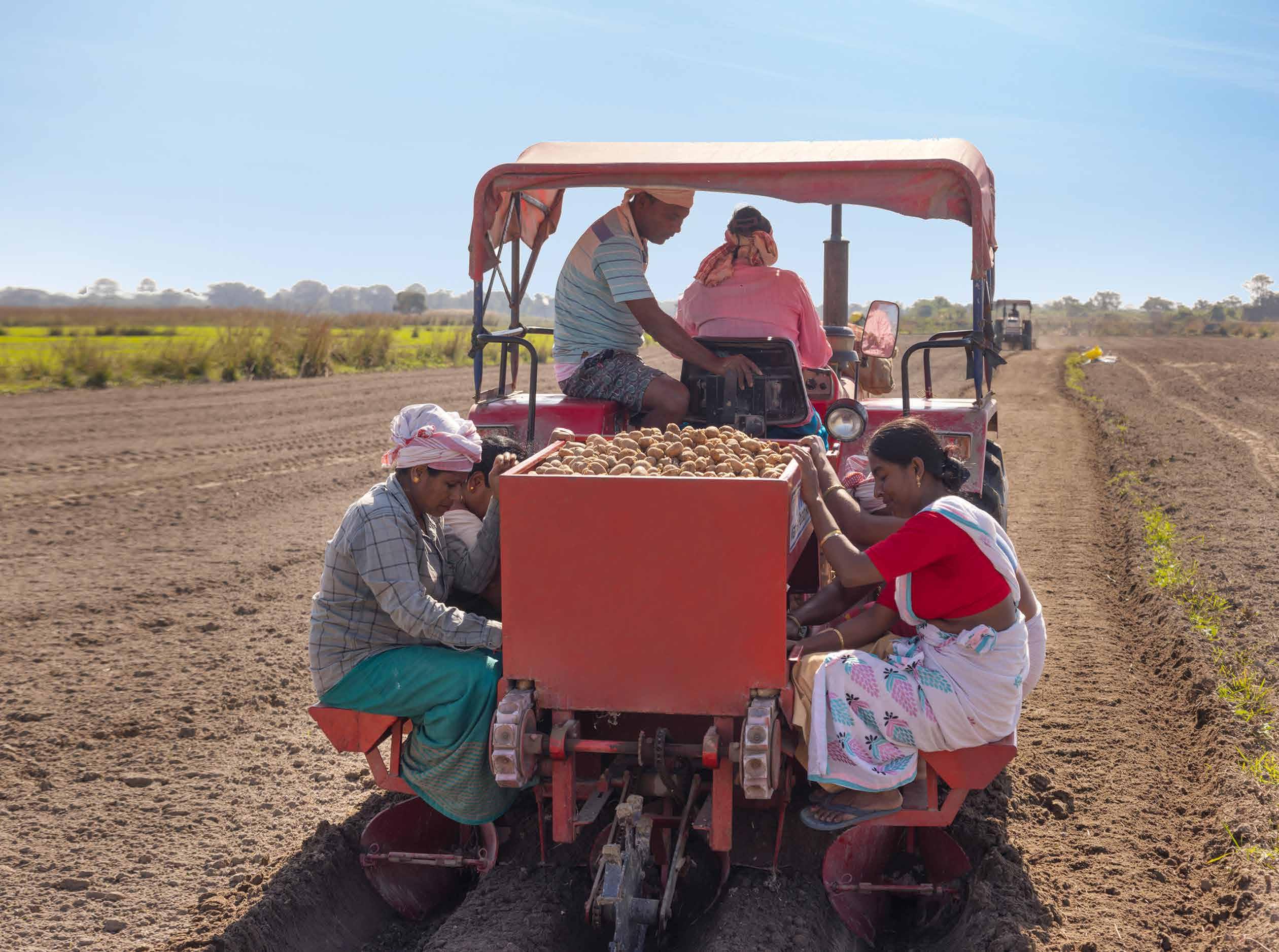
On a pleasant December morning, 37-year-old farmer Kamal Kumari, set out from her home to the fields bordering her village in the northeastern state of Assam. As she walked through vast paddy and mustard fields, she could see the faint outline of the majestic Himalayas in the distant horizon. Kamal was joined by other women farmers, and together they reached a large plot of land. Taking charge of the bright yellow seeder machine, Kamal climbed onto the driver's seat, while her companions filled the back of the tiller with potato seeds. Throughout the day, they ploughed through the field planting the potato seeds.
These women farmers are members of the Joyomoti Farmer Producer Company Limited, an all-women shareholder company, of 435 members from 25 villages in the Sonitpur district of Tezpur, Assam. They largely engage in cultivation, growing paddy, pumpkin, mustard, and other vegetables throughout the year.
"Previously, we would work on our individual plots of land and sell our produce after meeting our own needs. The income we earned was just enough to sustain our families,” say the women farmers. “Now that we have come together as a Company, we cultivate crops based on market demand and earn better rates and share the profits. Our incomes have also increased two to three-fold."
In 2022, their hard work paid off when a multinational company offered them a buy-back contract to cultivate potatoes. After successfully selling the potatoes, their Farmer Producer Company (FPC) made a profit of around Rs. 20 lakhs, which was distributed among the 52 participating farmers. Kamal Kumari, the chairman of the FPC proudly states, “We have always been farmers, but now we are agripreneurs with our own Company.”
Support from The World Bank's APART Project
The World Bank’s Assam Agribusiness and Rural Transformation Project (APART) is supporting 125 such FPCs in Assam, with over 60,000 farmers as shareholders including around 20,000 women. The FPCs are formed using a geographic clustering model bringing together farmers engaged in similar activities - agriculturehorticulture or fishery and silk. Each farmer contributes Rs. 1000/- to become a shareholder. As a registered FPC, the Company then gets access to technical and financial support from the Project as well as financing from banking and financial institutions.
3 World Bank in India
Empowering Farmers with Knowledge and Resources
Under APART, FPCs receive financial support to set up Common Service Centers and Custom Hiring Centers, where members can access farming inputs such as fish feed, seeds, fertilizers, and farm equipment. Farmers are also introduced to innovative and improved farming techniques, including crop management and vegetable farming. Those engaged in fishery receive training in improved and hygienic fish farming techniques and are encouraged to invest in value-added products that have market demand.
Fifty-year old Pronoti Goswami, living in Chengnoi village, in Nalbari District, used to rear fish in her small pond and support her family by selling the surplus in the local market. Now she has successfully diversified her fish farming business. As a shareholder of the Chengnoi FPC, she received training and resources to venture into fish seed farming. “Thanks to the training, I realized that I could make more money through fish seed farming, which are used as eggs in ponds and fish farms. There is demand for it throughout the year. My income has increased six-fold from Rs. 50,000 to Rs. 3 lakhs now.”
Similarly, in the same village, Lavita Dekka Goswami, a 30-year-old graduate has expanded her fish farming business to include value-added products such as dry fish, fish pickles, and mustard paste. With the training provided under APART, Lavita now packages these products for sale in the local market and supermarkets. “My small investment of Rs. 30,000/- is now fetching me around Rs. 10,000-15000/- every month.” Lavita is now training other women farmers and hopes to increase the sale of these products in supermarkets across the district.
Nurturing Women-led Enterprises
The Assam Agribusiness Growth Lab is an integral part of the APART project. This initiative focuses on supporting enterprises in the agriculture and allied sectors, with a special emphasis on women-led businesses. One such success story is that of Mayashree Baruah, a 33-year-old graduate and former teacher, who runs a thriving microenterprise in the outskirts of Guwahati.
Mayashree embarked on her entrepreneurial journey after marriage, producing chemical and preservativefree puffed rice snacks that quickly gained popularity. Prior to 2020, she was making an annual profit of approximately Rs. 5 lakhs. She then decided to expand her snack items to include millets which she was procuring from the farmers.
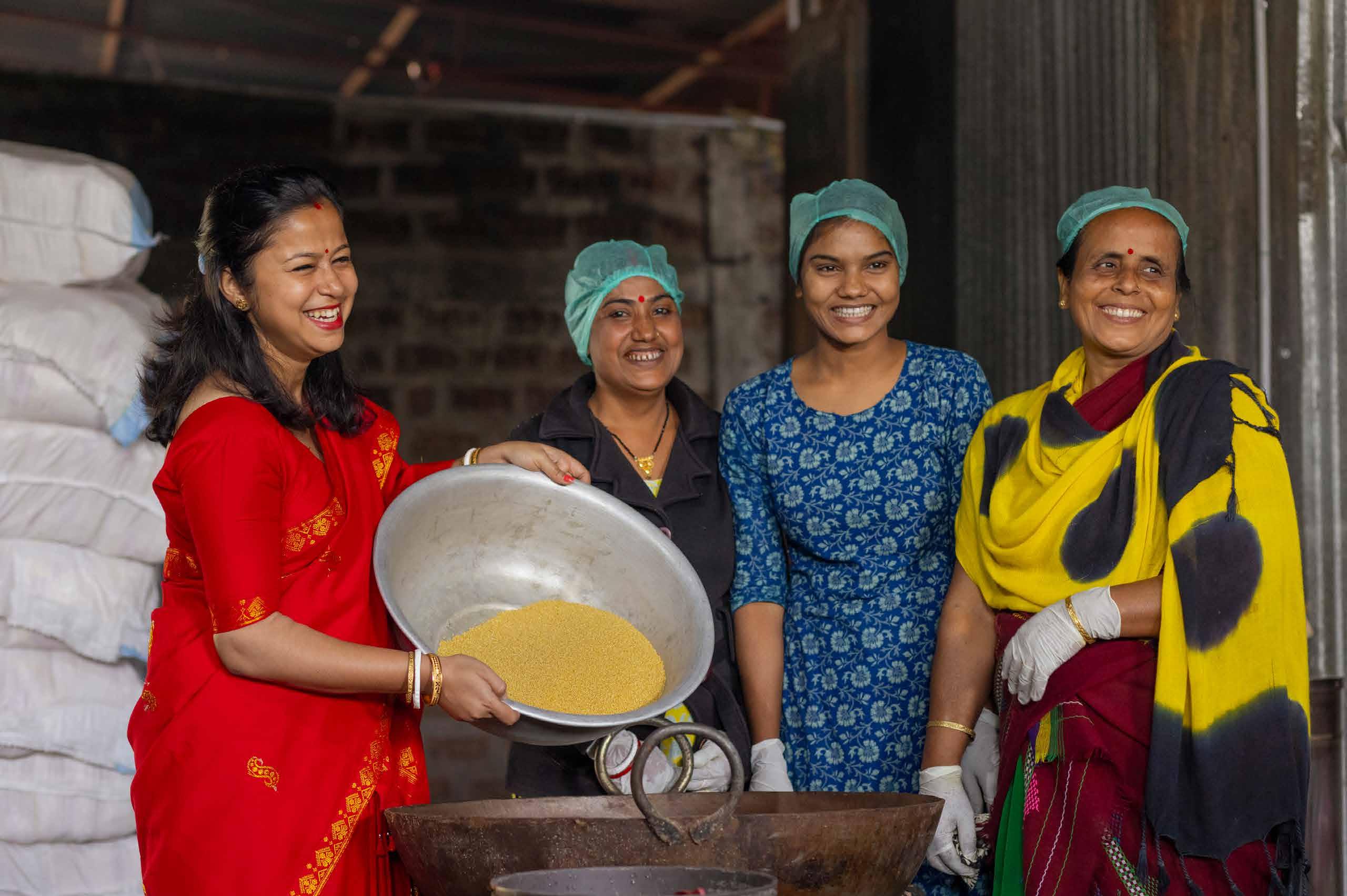
4
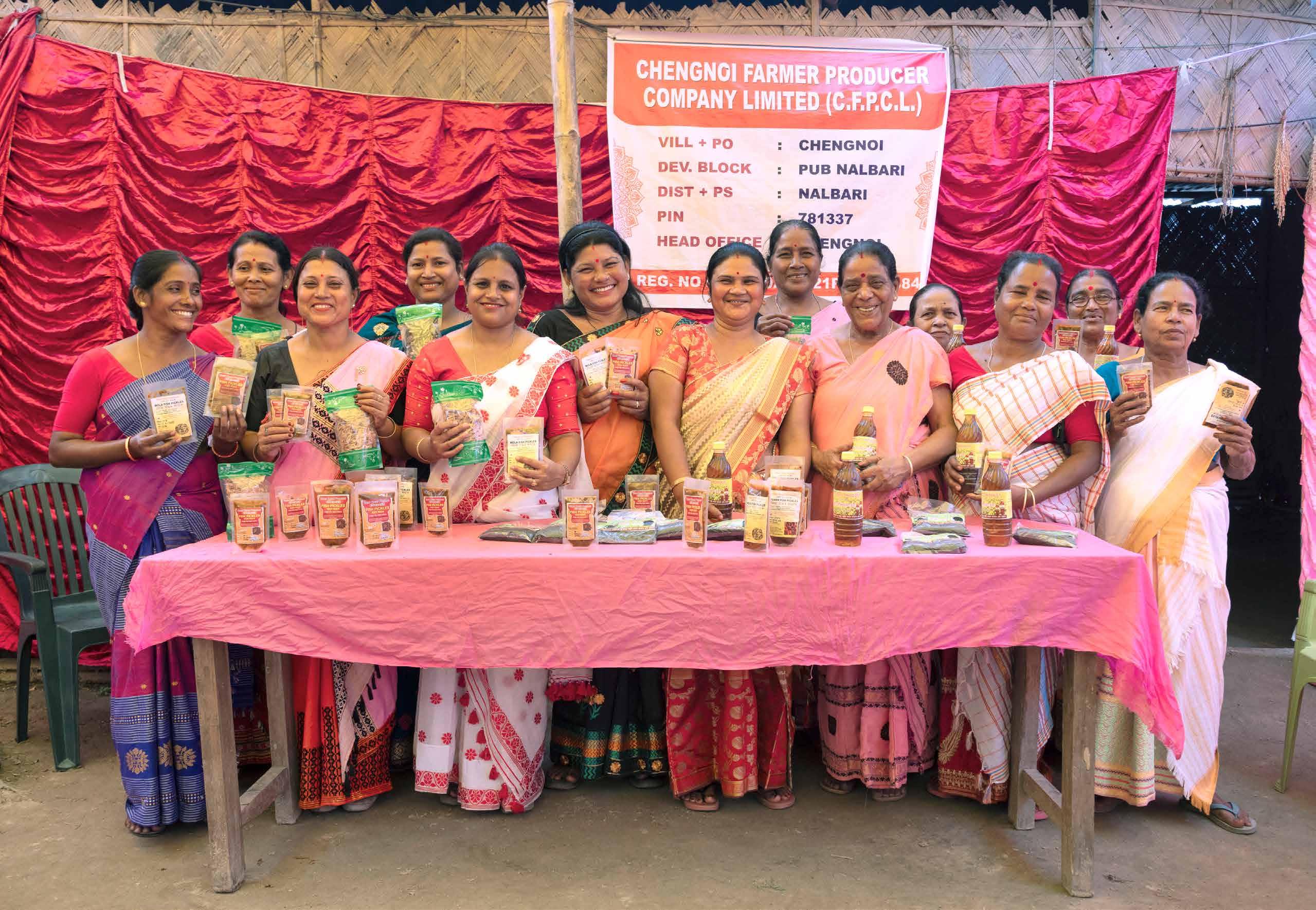
"The training and support I received through the Agribusiness Growth Lab equipped me with the knowledge and skills to expand my micro-enterprise significantly," said Mayashree. "In 2022-23, my turnover doubled to around Rs. 13 lakhs. Now, I have diversified my product range and expanded my market reach across large parts of Assam. I am confident that my turnover will reach 25 lakhs in 2023-24."
Empowering Farmers with Banking and Finance Knowledge
APART is also implementing multiple activities to increase access to financial services for Assamese farmers and agribusiness SMEs and build their capacity to effectively utilize these services. APART has established Xamahar, a challenge fund that provides competitive grants to financial service providers to scale-up tested financial innovations for the benefit of farmers and agribusiness enterprises in the state.
Farmers have access to Krisarthak, a digital financial education and counselling platform that is enhancing their financial literacy, helping them to make informed decisions and manage their finances effectively.
Lastly, to increase access to long-term capital for growthoriented small and medium-sized enterprises (SMEs) in the agribusiness and allied sectors, APART is launching
an Assam Agribusiness Investment Fund. This Fund will make long-term debt and equity investments in growthoriented SMEs in the agricultural sector, providing muchneeded long-term capital for the growth and expansion of agribusiness enterprises.
Entrepreneurial Mindset: Thinking Beyond Traditional Farming
With the knowledge gained and resources made available through APART, farmers are now beginning to think as entrepreneurs. They are eager to expand their product range, explore new markets, and create a brand around their products.
Kamal Kumari, of the Joyomoti FPC smiles as she says, " We are confident of increasing our turnover to over Rs. 2 crores in 2023-24. Now our plan is to purchase an oil mill to prepare oil from our mustard crop. We will package and sell it under our own brand name across the state and beyond.”
Meanwhile, Mayashree plans to transition from her current proprietorship firm to a private limited company. "Once my company is established, I can explore opportunities for loans and grants to grow my business. I want to expand my distribution network and reach more customers across other states in the Northeast."
5

Transforming Lives
Not only have the farmers gained economically, but they are also transformed individuals now with a greater sense of worth in their community. Ranju Goala, in her late 30s, has spent most of her life taking care of her home and family. She admits that her life took a significant turn when she joined the Joyomoti FPC. "Earlier, I would never stand up and speak in front of people. Today, I can communicate with outsiders, engage in business discussions, and voice my opinion," says Ranju. "I now have an identity and feel empowered."
As the sun sets on the horizon in Sonitpur, casting a golden glow over the fields, the women farmers of the Joyomoti FPC finish their work in the potato field and walk back home, exhausted but happy.
6

The World Bank is engaged in the agriculture sector in Assam for over two decades.
It began with the $126 million Assam Rural Infrastructure and Agriculture Services Project (ARIASP) in 1995. The project helped increase agricultural productivity and incomes of around 2 lakh small and marginal farmers in the state. The project closed in 2004.
In 2005, the $154 million Assam Agriculture Competitiveness Project (AACP) was approved. The Project focussed on increasing productivity and improving market access. It helped improve irrigation and use of agricultural technology leading to close to 40 percent increase in production of highvalue crops like vegetables and oilseeds benefiting over 5,50,000 farmers. The project closed in 2015.
The ongoing $200 million Assam Agribusiness and Rural Transformation Project (APART) was approved in 2017. The project focuses on both primary agriculture and enterprise development. In primary agriculture, APART has already supported over 500,000 farmers across sectors like rice, dairy, fisheries, livestock, and silk, with plans to reach an additional 100,000 farmers. In enterprise development, the project has transformed over 2,000 enterprises and aims to support 1,000 more, including 50 large agribusiness enterprises.
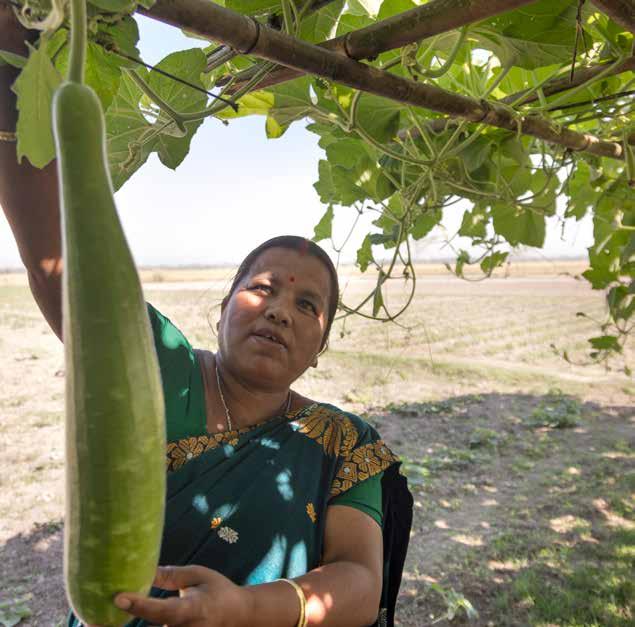
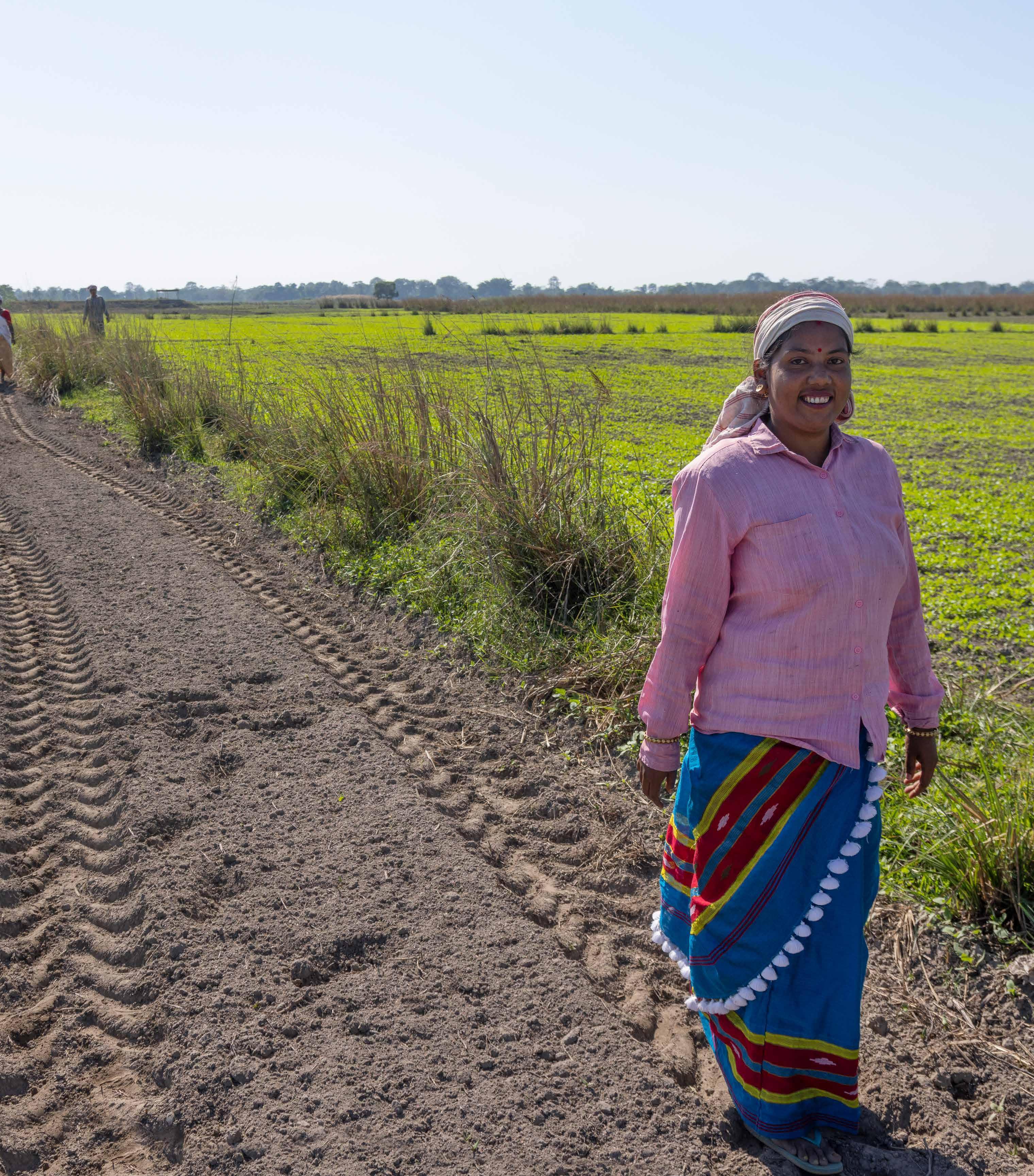
World Bank in India
7
Development Dialogue
Gearing up for India’s Rapid Urban Transformation
Auguste Tano Kouamé
India is urbanizing rapidly. By 2036, its towns and cities will be home to 600 million people, or 40 percent of the population, up from 31 percent in 2011, with urban areas contributing almost 70 percent to GDP. How well India manages this urban transformation will play a critical role in realizing its ambition of becoming a developed country by 2047, the 100th year of independence.
Indeed, building the necessary infrastructure will be key for creating livable, climate-resilient, and inclusive cities that drive the economy forward.
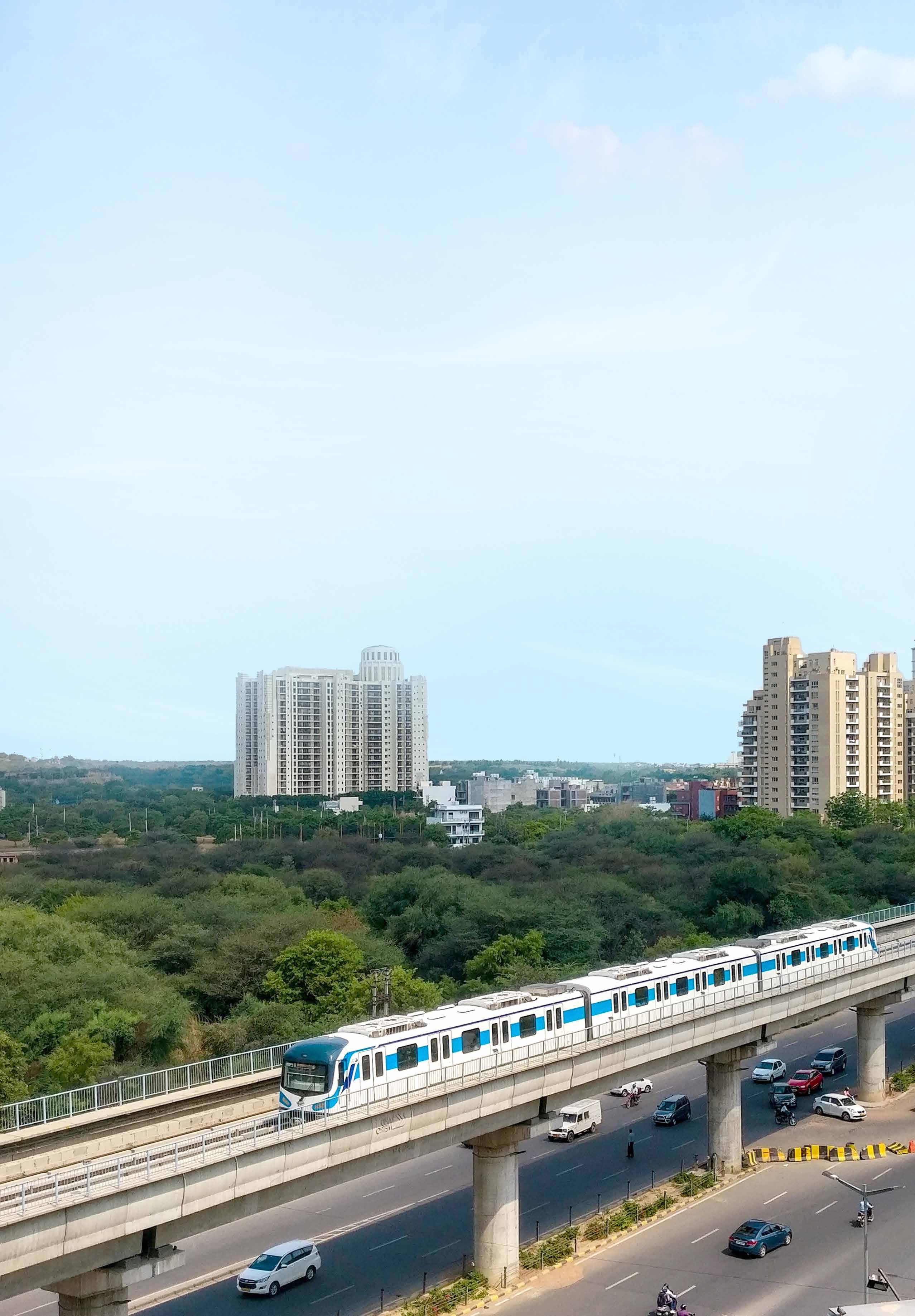
Since nearly 70 percent of the urban infrastructure needed by 2047 is yet to be built, sizeable investments will be required. By 2036, India will need to invest $840 billion in infrastructure - an average of $55 billion or 1.2 percent of GDP per annum. However, estimates suggest that between 2011 and 2018, the country’s total capital expenditure on urban infrastructure averaged only 0.6 percent of GDP, half the required quantum of investment.
Clearly, private financing will need to play a significant role. Yet, while more than 160 Indian cities have been
8
classified as investment grade, reliance on government funding remains high. Central and state governments finance 72 percent of urban infrastructure, with commercial financing providing a meagre 5 percent. Recognizing these challenges, the government has taken measures to enable commercial financing, but its use remains extremely limited, even in financially strong cities. To tap into private capital, urban local bodies (ULB) will need to comprehensively build their capacity and focus on executing bankable projects. It will also be important for the country to develop the municipal bond market and introduce innovative financing structures.
To increase the productive potential of citizens, cities will also need to invest in public services to improve their quality of life. Building human capital by improving access to health care and upgrading skills - with the private sector playing an important role - is a critical component of India’s urban transformation agenda.
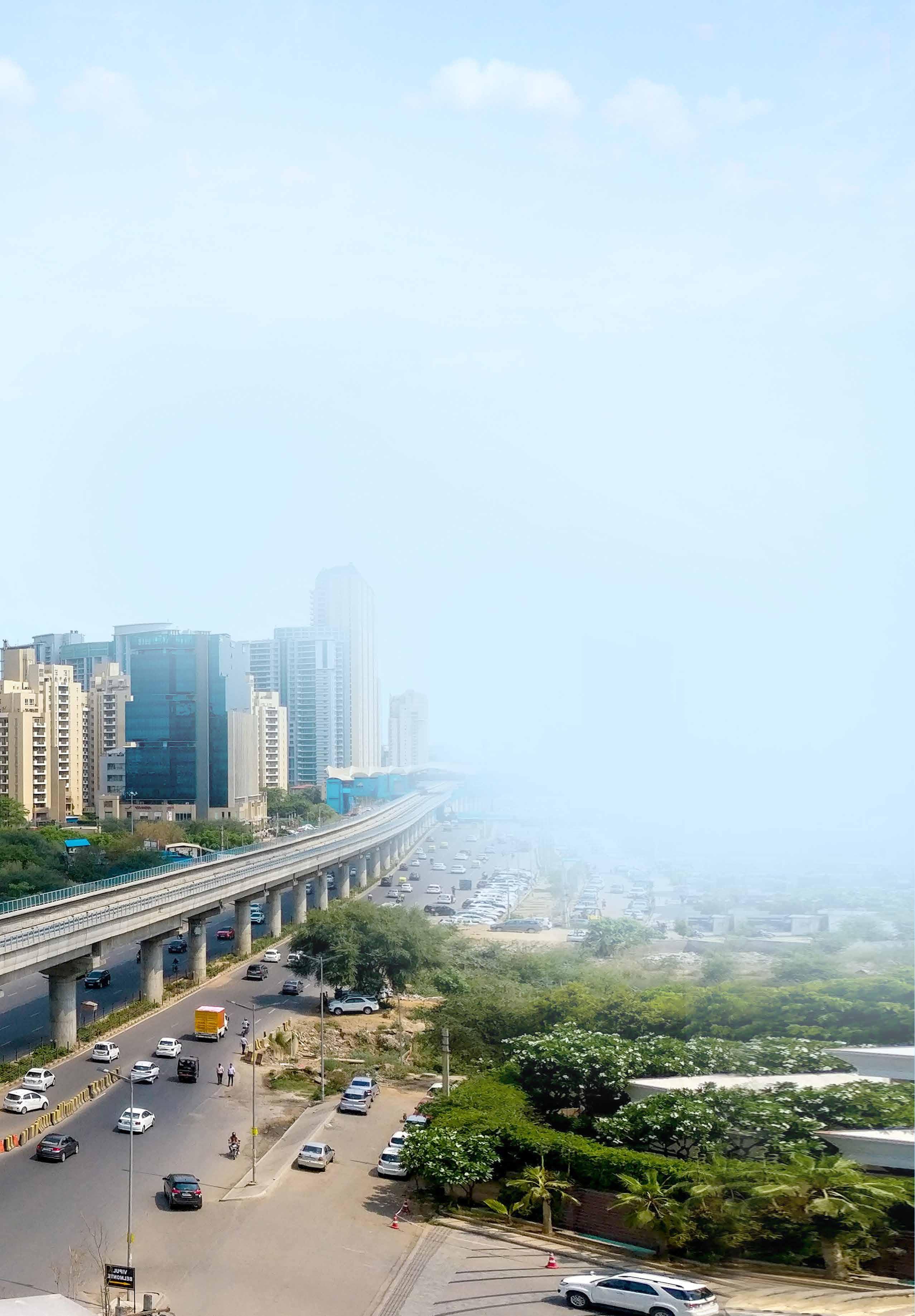
Providing efficient public transportation is another factor that adds to people’s productive potential. Chennai, for instance, is addressing institutional fragmentation in the transportation sector by taking a holistic approach and establishing a nodal body to oversee, coordinate, and monitor traffic and transportation in the city.
Ensuring that transportation is safe and accessible for women can also help bring more women into the work force, a key opportunity for development. World Bank calculations suggest that over the next 10 years, India can probably add 1.2 percentage points per year to potential growth if female labor force participation gradually increases from the current 31.6 percent to more than 50 percent.
Given that India is a water-stressed country, creating the infrastructure needed for water security is just as imperative. Surat, for instance, has become one of the first Indian cities to recycle wastewater at scale. And Dharampuri – a small town in Madhya Pradesh - has become water surplus by developing an integrated approach to water supply, linking every household to the sewerage system, and recycling wastewater. Other cities too can learn from their example.
The World Bank stands ready to work with the Government of India, urban local bodies and citizens to fulfil their vision of livable cities for all.
This Opinion piece first appeared in The Economic Times on January 26, 2024.
World Bank in India
9
New Videos
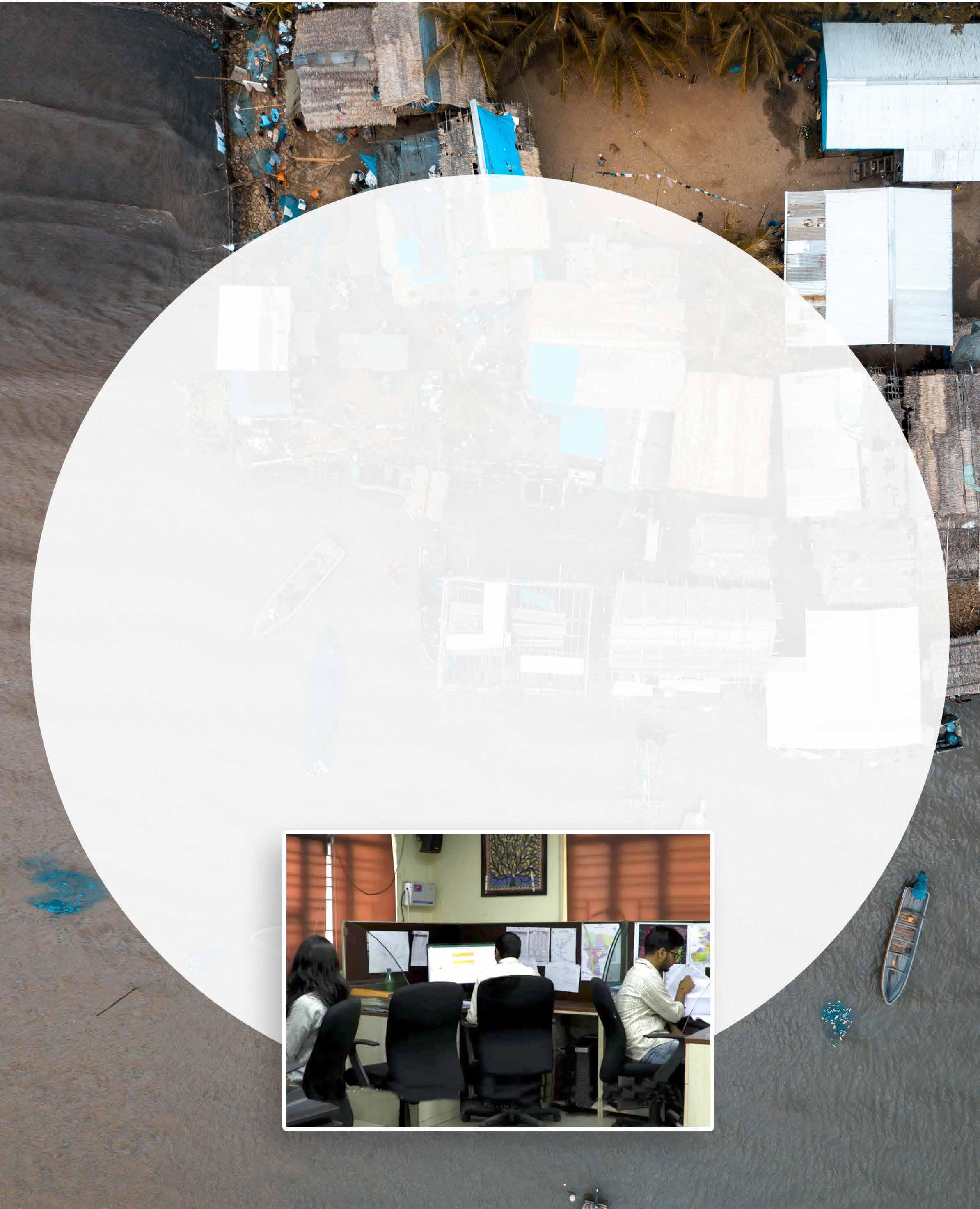
Transformative Flood Management Through the Kosi Basin Development Project
Bihar, once ravaged annually by the relentless floods from the Kosi River, has undergone a remarkable transformation, with the World Bank-supported Bihar Kosi Basin Development project. The strategic fortification of spurs and embankments helped protect infrastructure and enabled communities to flourish along the riverbanks. The new Flood Management Improvement Support Centre, established
Watch the video here
under the Project, is using innovative technology to gather data, and uses simulation to forecast flood warnings. This is helping the state to be better prepared and better manage its agriculture, infrastructure, education, and healthcare. This project provides a holistic model for effective flood management and offers insightful learnings for regions facing similar challenges. Hindi Video
10
English Video
India’s Dam Rehabilitation and Improvement Program
India’s 5,700 large and small dams play an important role in irrigating arid lands, protecting people from floods, and meeting the country’s soaring demand for power. Many of these dams are ageing. Built for the rainfall patterns of an earlier era, the recent erratic rains have left them vulnerable. Besides, given minimal investment in their maintenance, many have fallen into the ‘high hazard’ category.
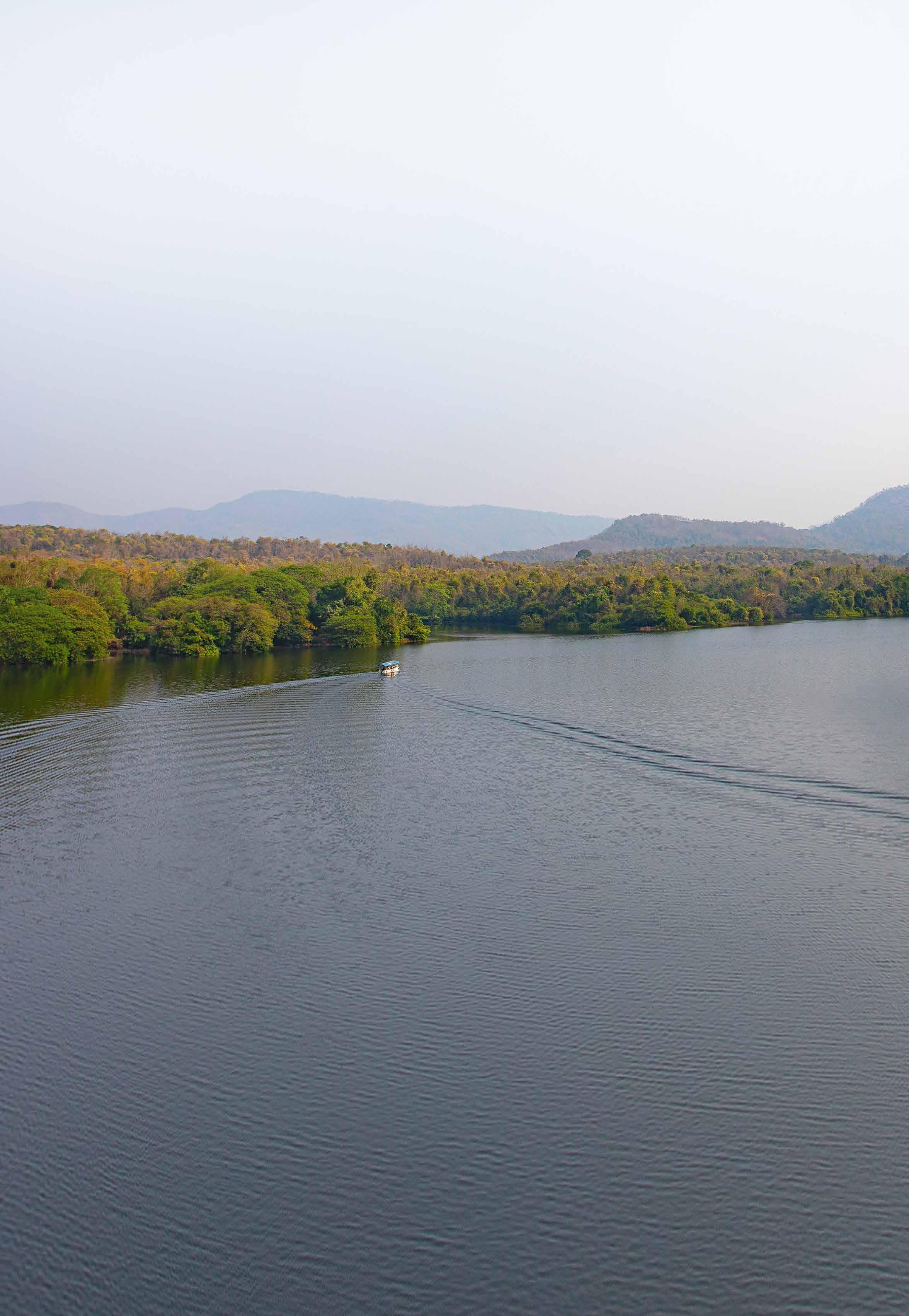
India has now become one of the world’s first countries to undertake a large-scale dam rehabilitation program. Since 2012, with World Bank support, it has deployed the latest expertise and technology to upgrade 200 of its large dams, the largest such program in the world.
To know more about what the project has achieved, watch the videos here


Dams Rehabilitation and Crisis
Preparedness: India's World BankSupported Initiative

World Bank in India 11
India Implements the World’s Largest Dam Rehabilitation Program
India’s Women Dam Engineers
Regional Dialogue
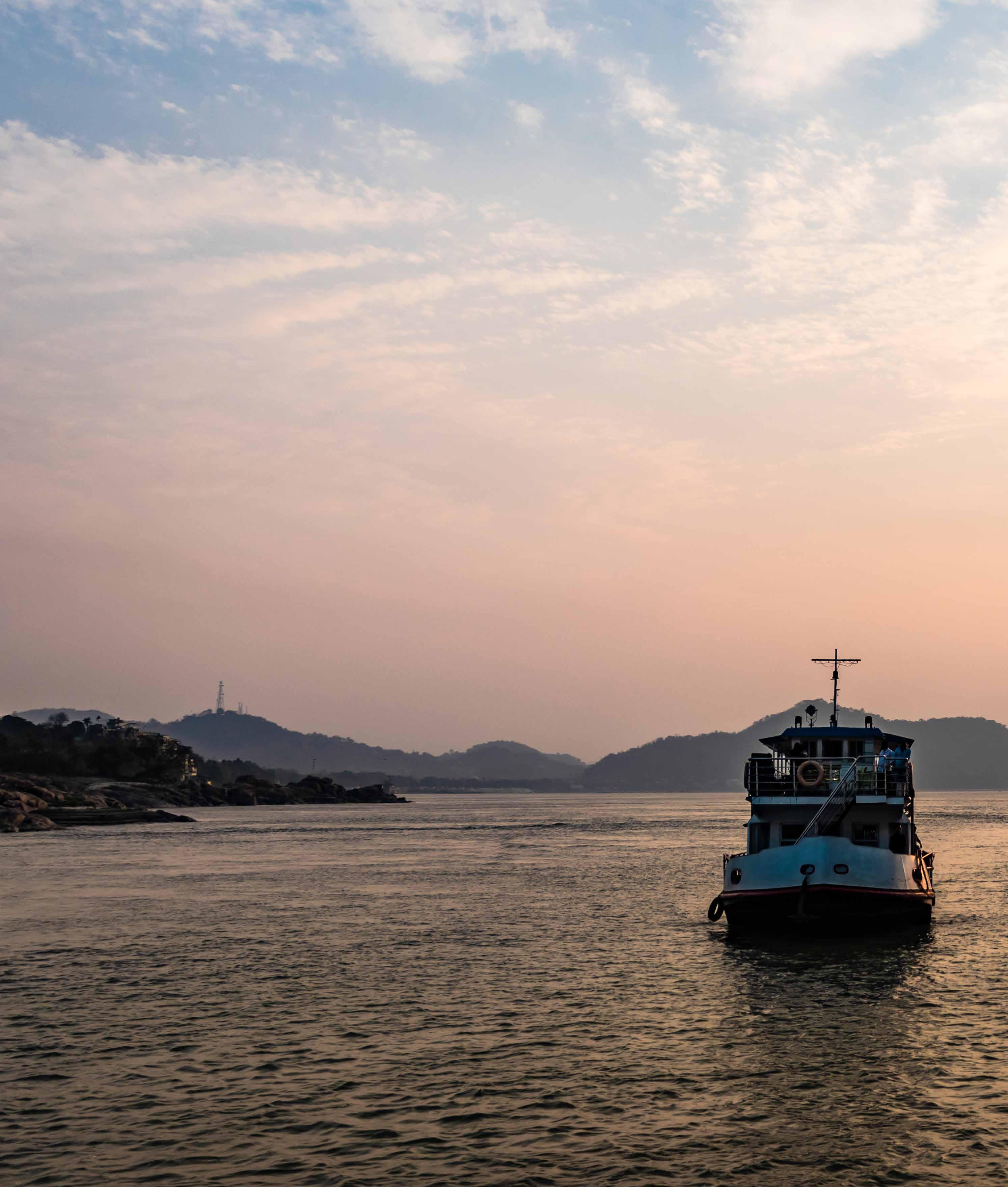
Harnessing Transboundary Rivers in South Asia
The COP28 in Dubai elevated water as a priority climate agenda. As climate change intensifies, it is exacerbating water scarcity and the extreme weather events like droughts and floods are becoming more frequent. Eight out of 10 climate events are water-related, and by 2050, an estimated 4 billion people globally will live in waterstressed areas. South Asia alone will account for almost half of this population exposed to water scarcity. With these projections and challenges, effective water resource management in the region is critical.
In South Asia, over 20 main rivers and over 200 smaller rivers and aquifers are transboundary in nature. Cross-border water management is inevitable. While there are no regional institutions or comprehensive mechanisms for transboundary water cooperation, a few bilateral agreements have been put in place.
The 17th OneSouthAsia Conversation, which featured speakers from the region and the World Bank, focused primarily on the need for multilateral dialogue and cooperation to manage South Asia’s water resources.
Ashwin Pandya, who has served as the chairperson of Central Water Commission, described South Asia as one hydrological unit, where development patterns do not match the water availability patterns—when the water demand is high, the availability is often low. “One of the main challenges of transboundary water dialogue is not just the quantum of water sharing, but also the timing of water sharing,” he said emphasizing the need for a neutral, honest dialogue that considers scientific and technical data, as well as the views of the people at the grassroots who are most impacted by water-stress.
12
For effective dialogue and collaboration, the speakers highlighted the need for a regional river basin organization, especially for the Ganga-BrahmaputraMeghna basin. “This will help harness the economic, ecological, and development benefits of our shared rivers more effectively,” said Malik Fida Khan, who is Executive Director of the Center for Environmental and Geographic Information Services in Bangladesh.
A consensus among the speakers was that while technical collaborations over water management have been active, a comprehensive holistic dialogue is missing. Ajaya Dixit, who is a senior advisor at the Institute for Social and Environmental Transition, Nepal, said that most bilateral treaties have not kept up with the emerging climate risks and need to be revised with a deeper look into the impact on biodiversity, ecosystems, and multiple requirements of water.
Dixit also brought in focus not just the main transboundary rivers and basins, but hundreds of small rivers and aquifers that are shared between the countries, but do not find place in conversations that are dominated by larger rivers and shared basins.

“We need to revisit our own efforts of transboundary water management, and our aim must be to share water equitably so that we can thrive together,” said Dixit.

To thrive together, hearing the needs of grassroots and riverine communities that are directly dependent on these rivers is essential. Runa Khan, who is the founder of Friendship, an international social purpose organisation in Bangladesh, said that besides transboundary and national-level water management and cooperation, there is a need for micro-level management at the community level, which considers the real needs and requirements of people at the grassroots and implements solutions with impact. Khan’s organization works with communities mainly in the shifting northern river islands, known as chars, of the Brahmaputra and Jamuna rivers and in the coastal areas of the Bay of Bengal. “Rivers are like the veins of a person's body, they carry different kinds of needs, especially for communities who live along the rivers and are dependent on them. These communities are also amongst the most vulnerable,” she said, adding that direct benefits for these communities offer an effective solution.
13 World Bank in India
Key Highlights

• South Asia has over 20 main transboundary rivers and hundreds of smaller rivers that cross political boundaries. Most of these transboundary waters lack any type of cooperative arrangement. South Asian countries have a few bilateral agreements, but a regional and multilateral cooperation framework for water resource management is missing.
• Climate change is changing water patterns and introducing urgency for enhanced transboundary water cooperation to manage the quantum and quality of water, but also the timing of water-sharing. Riparian countries and states need effective water management during distress and peak demand periods.
• Objective, fact-based scientific and technical cooperation, and knowledge-sharing among countries
is critical including in areas like hydropower generation, data sharing and early warnings on floods, managing salinity and sedimentation, ground water management, and other climate change-related challenges.
• While government-to-government and Track II dialogues are important, there is a need to include grassroots participation and community-level dialogue for effective management of water resources to help communities that are directly impacted. All these efforts help in building trust and collective approaches that benefit all parties.
• The World Bank has established a global facility for transboundary water cooperation, which will share technical assistance, global expertise, and good practices with countries.

14
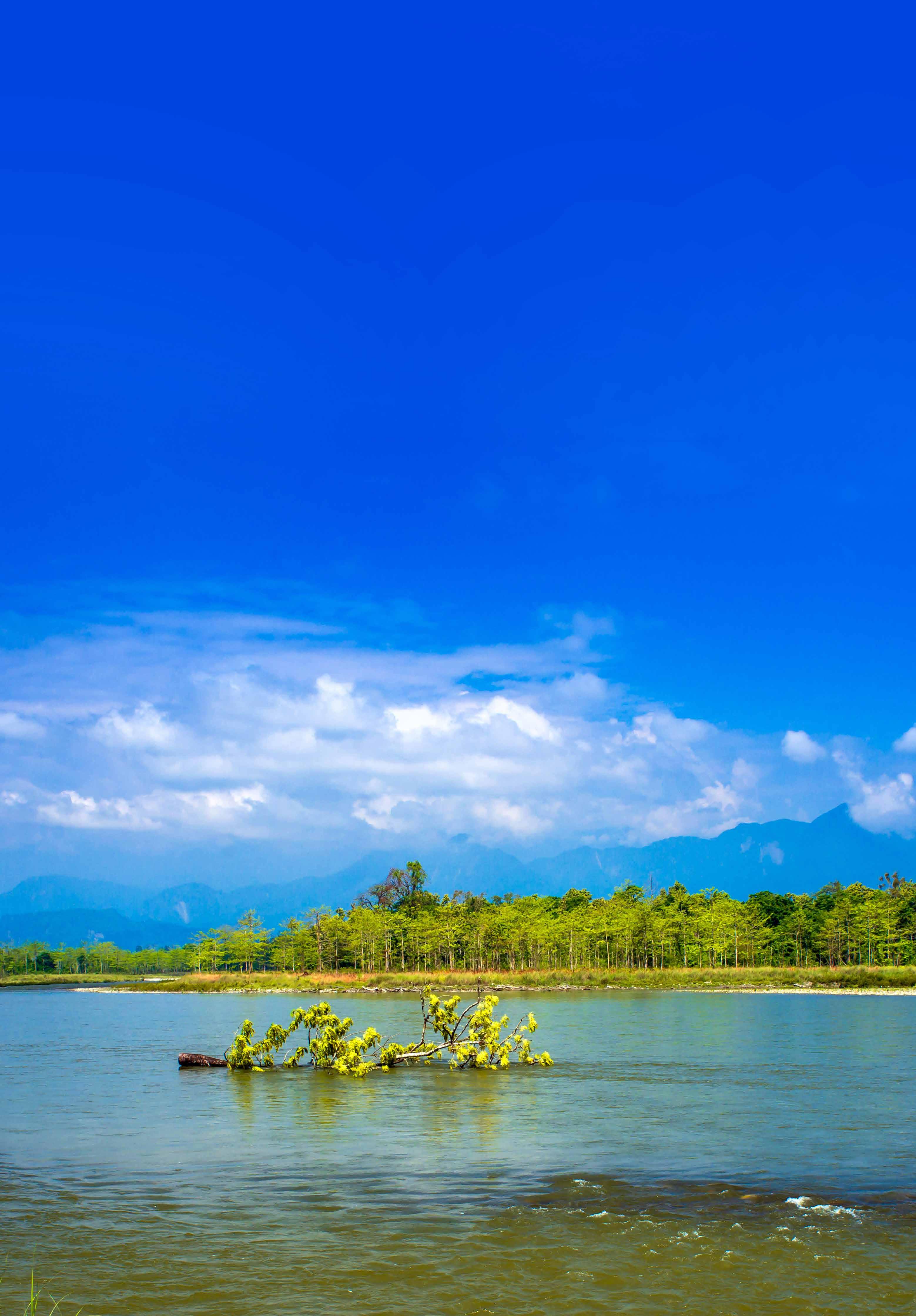
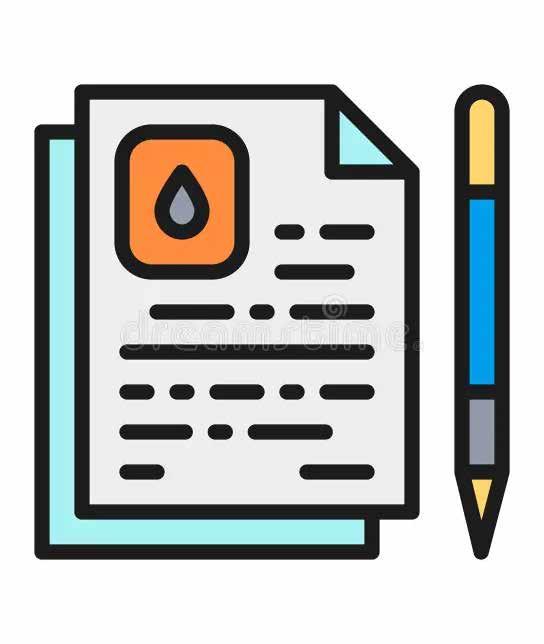
Bilateral water agreements in South Asia
• Between Bangladesh and India - who share 54 transboundary rivers - a Joint River Commission was established in 1972, and one long-term agreement on river management - the Ganges Water Sharing Treaty of 1996 - was signed.
• 1960 Indus Water Treaty between India and Pakistan
• 1996 Mahakali Treaty between India and Nepal, and several hydropower generation agreements between India and Bhutan.
Water facts and Highlights
• It is estimated that by 2050 between 1.5 to 1.7 billion people in South Asia are projected to be exposed to water scarcity.
• More than 310 rivers and 500 aquifers cross political boundaries around the world. More than two-thirds of these rivers – and many more aquifers – lack any type of cooperative arrangement.
• Globally, about 40 per cent of the world’s population lives in river and lake basins that cross international borders.
15 World Bank in India
Some recent Blogs

Despite an innovative infrastructure and vibrant economy, the city of Ahmedabad in Gujarat, struggles to meet its water and sanitation needs. A knowledge sharing and operational collaboration between the cities of Fukuoka in Japan and Ahmedabad, has paved the way for a sustained city partnership.
Learn more: From Fukuoka to Ahmedabad: Supporting Indian Wastewater Management Solutions through City Partnerships

How can bottlenecks in public financial management (PFM) be addressed to improve the delivery of health services to citizens. The World Bank’s FinHealth: PFM in Health Tool offers a holistic analysis of health sector service delivery from a Governance and a PFM perspective and helps develop a sequenced and detailed action plan to address bottlenecks and help improve service delivery.
Learn more: Eliminating bottlenecks in public finance to improve the delivery of health services

A study using firm-level survey data 141 developing and emerging countries estimates the overall relationship between the share of direct exports in the firm’s total annual sales and the share of women workers in the firm’s workforce. It explores various heterogeneities in the relationship, aiming to uncover the intricate channels through which exports impact women's employment.
Learn more: When does exporting increase women’s employment in the developing world?
16
New Projects
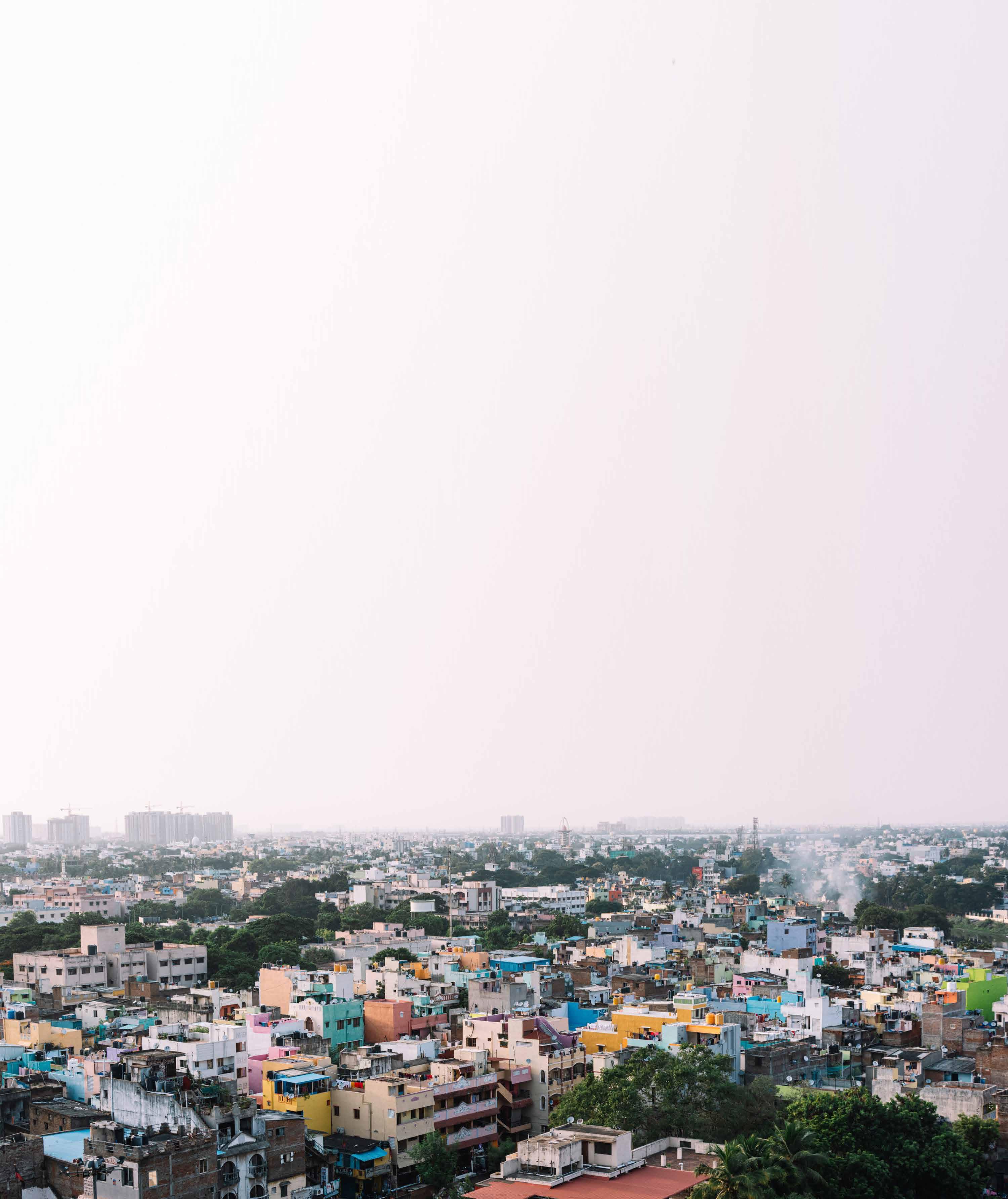
Tamil Nadu: Strengthening Urban Water, Sewerage System for 2 Million People
The World Bank has approved a program to provide around 2 million people in Tamil Nadu, with more and better access to water and sewerage services in its cities.
Tamil Nadu is one of the most urbanized states in India and faces increasing impacts of climate shocks like floods and droughts. For its rapidly growing population, access to services like water and sanitation is essential for more climate-resilient cities.
The $300 million Tamil Nadu Climate Resilient Urban Development Program will help 21 Urban Local Bodies (ULBs) update their delivery systems and provide quality and efficient water supply and sewerage services to consumers.
Besides helping to gain better access to water supply to households, the Program will support ULBs to increase designated areas for green spaces and parks.
“This Program aims to leverage the private sector by introducing performance-based contracts. In addition, it will issue municipal bonds and support urban governance reforms to improve the fiscal health of ULBs and secure the future needs of the urban population,” said Raghu Kesavan, Mansha Chen, and Lilian Pena P. Weiss, the Task Team Leaders for the project. “Communities, especially women, will also play a key role in designing and supporting effective climate action plans for cities.”
The $300 million loan from the International Bank of Reconstruction and Development (IBRD) will use the blended financing instrument of Program-for-Results (PforR) with Investment Project Financing (IPF) to link disbursement of funds directly to the achievement of results while providing technical assistance. The Program loan has a maturity of 32 years.
The Program will:
Leverage the private sector by introducing performance-based contracts
Issue municipal bonds
Support urban governance reforms to improve fiscal health of ULBs
Include women to play key role in designing & supporting effective climate action plans for ciities
World Bank in India
17
Sikkim: New Project to Upskill over 3 lakh Women and Youths for Jobs in High-Growth Sectors
The World Bank has approved a project to support the state of Sikkim’s efforts to train, upskill, and provide jobs for over 3 lakh women and youth in high-growth and priority sectors.
Sikkim has been one of the fastestgrowing states in India. While over 40 percent of youth are currently engaged in agriculture, the state has a growing manufacturing and services industry. To sustain growth, the state aims to skill its women and youth in jobs in non-farm sectors like renewable energy, information and technology (IT) services, tourism, hospitality and wellness care, and creative design.
The $100 million Sikkim: Integrated Service Provision and Innovation for Reviving Economies (INSPIRES) Operation will establish an Employment and Entrepreneurship Promotion Facility, which will promote partnerships with privatesector firms, central agencies, and business associations. In addition, the project will provide
staff trainings and build public procurement capacity across priority state departments.
Studies have shown that around 70 percent of Sikkim’s youth aspire to work in sectors like renewable energy and IT and would need technical and foundational skills.
“To meet the aspirations of women and youth who want to work in the manufacturing and services sector, the Program will organize bootcamps, create a workplace safety management system, and provide transport allowance and business development support,” said Kanchan Rajeevsingh Parmar, Benedicte Leroy de La Briere, and Anna O'Donnell, the Task Team Leaders for the operation.
The $100 million loan from the International Bank of Reconstruction and Development (IBRD) will use the blended financing instrument of Program-
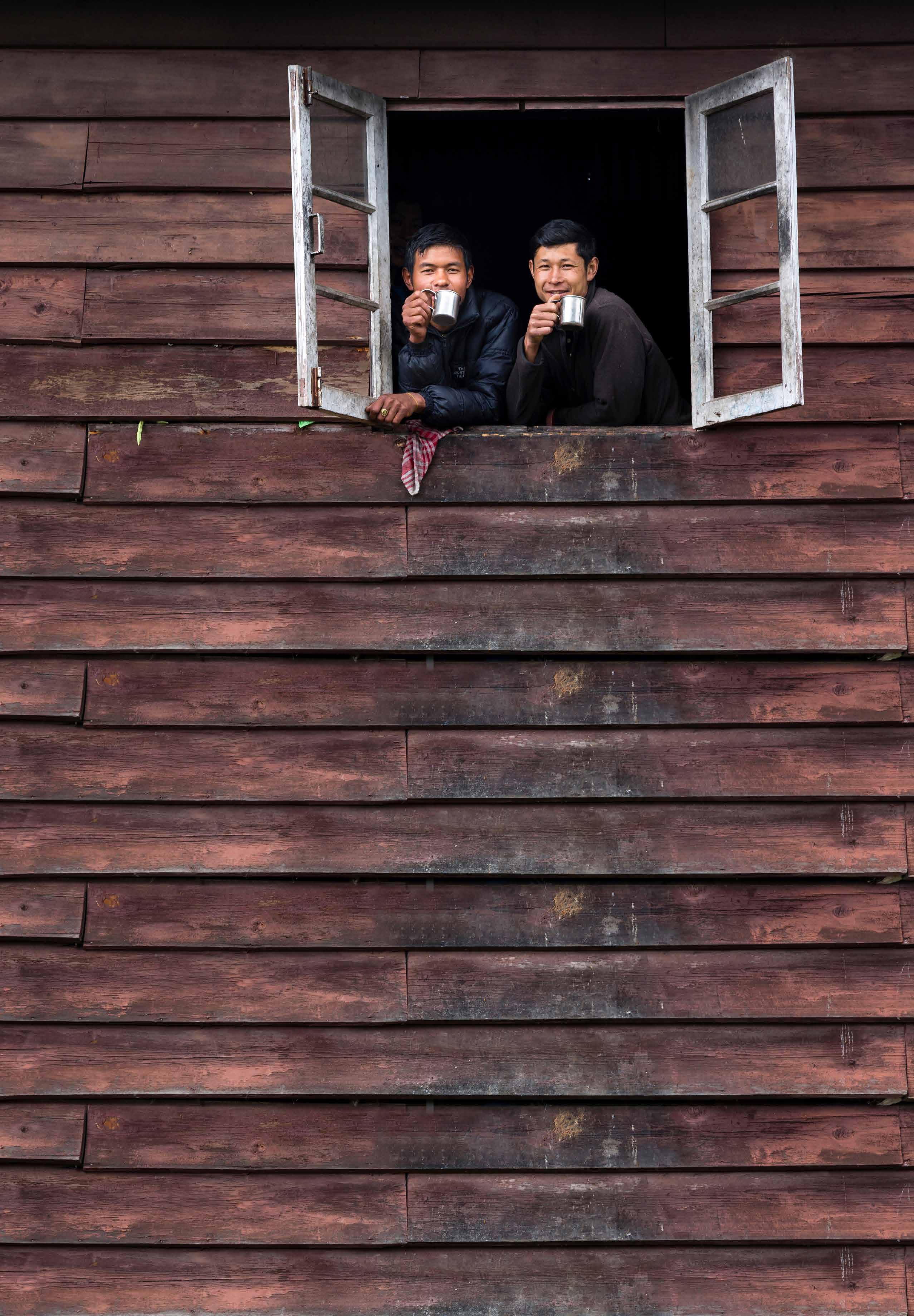
for-Results (PforR) with Investment Project Financing (IPF) to link disbursement of funds directly to the achievement of results while providing technical assistance. The loan has a maturity of 14 years.
The Program will:
Organize bootcamps
Create a workspace safety management system
Provide transport allowance
Provide business development support
18
New Publications
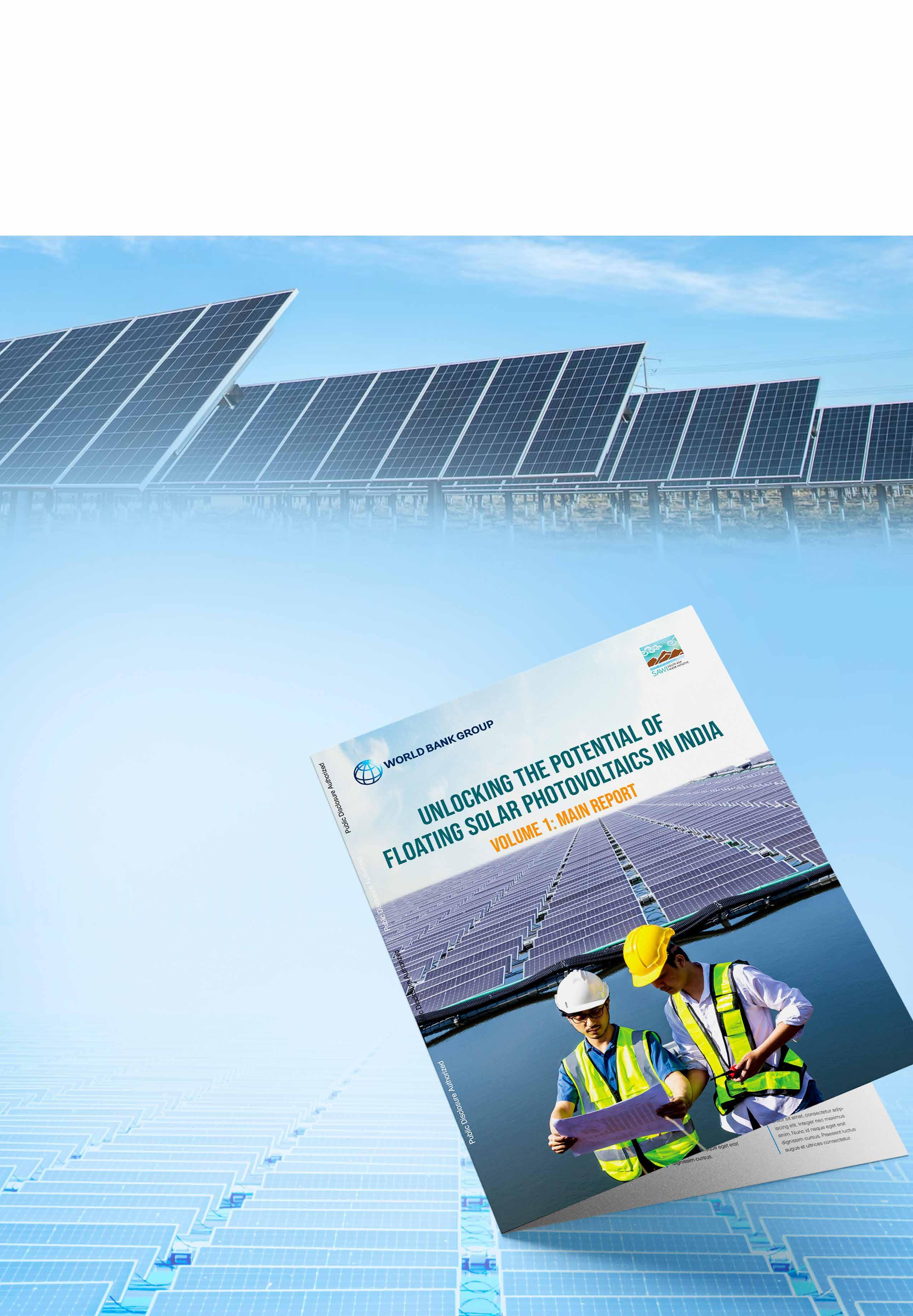
Unlocking Floating Solar Photovoltaics Potential in India
This report builds a case for India to look beyond land and institute an ecosystem that supports the installation and operationalization of floating solar photovoltaics (FSPV) power plants. Since these plants are installed on the underutilized surfaces of large water bodies, no land needs to be diverted from other uses. The installation of FSPVs also spurs job creation and catalyzes the development of a domestic value chain as some of the components, such as floaters, need to be manufactured close to installation sites. They also provide a range of other benefits as they generate relatively more power than ground-mounted solar plants (due to the cooling effect of water) and better utilize shared infrastructure such as transmission systems, wherever available.
19
Global Economic ProspectsJanuary 2024
The Global Economic Prospects is the World Bank’s bi-annual flagship publication – published every January and June. The recently published January 2024 edition says that as the world nears the midpoint of what was intended to be a transformative decade for development, the global economy is set to rack up a sorry record by the end of 2024 —the slowest halfdecade of GDP growth in 30 years.
By one measure, the global economy is in a better place than it was a year ago: the risk of a global recession has receded, largely because of the strength of the U.S. economy. But mounting geopolitical tensions could create fresh near-term hazards for the world economy. Meanwhile, the medium-term outlook has darkened for many developing economies amid slowing growth in most major economies, sluggish global trade, and the tightest financial conditions in decades.
Global trade growth in 2024 is expected to be only half the average in the decade before the pandemic. Meanwhile, borrowing costs for developing economies—especially those with poor credit ratings—are

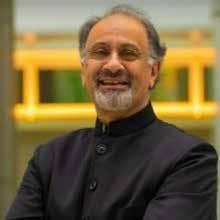
“Without a major course correction, the 2020s will go down as a decade of wasted opportunity Near-term growth will remain weak, leaving many developing countries—especially the poorest—stuck in a trap: with paralyzing levels of debt and tenuous access to food for nearly one out of every three people. That would obstruct progress on many global priorities. Opportunities still exist to turn the tide. This report offers a clear way forward: it spells out the transformation that can be achieved if governments act now to accelerate investment and strengthen fiscal policy frameworks.”
Indermit Gill, the World Bank Group’s Chief Economist and Senior Vice President.
likely to remain steep with global interest rates stuck at four-decade highs in inflation-adjusted terms.
The report offers the first global analysis of what it will take to generate a sustained investment boom, drawing from the experience of 35 advanced economies and 69 developing economies over the past 70 years.
20
• A commentary on how the International Debt Statistics database serves as an indispensable resource for researchers and policy makers; and
• A one-page snapshot of relevant debt indicators and summary of debt stocks and flows for six years (2010 and 2018–22) for each country, plus global income group and regional aggregates.
For more information on IDR 2023 and related products, please visit the World Bank’s Debt Statistics website at www.worldbank.org/debtstatistics
The Business of the State
State participation in economic activity is not new. A renewed upswing in the use of state-owned companies to achieve various objectives has been observed. This renewed enthusiasm for state firms among country policy makers are diverse. State-owned enterprises have been traditionally mobilized to tackle natural monopolies and strategic sectors with national security implications, and to ensure universal access to services. These roles could become more valuable at a time when new technologies are strengthening network
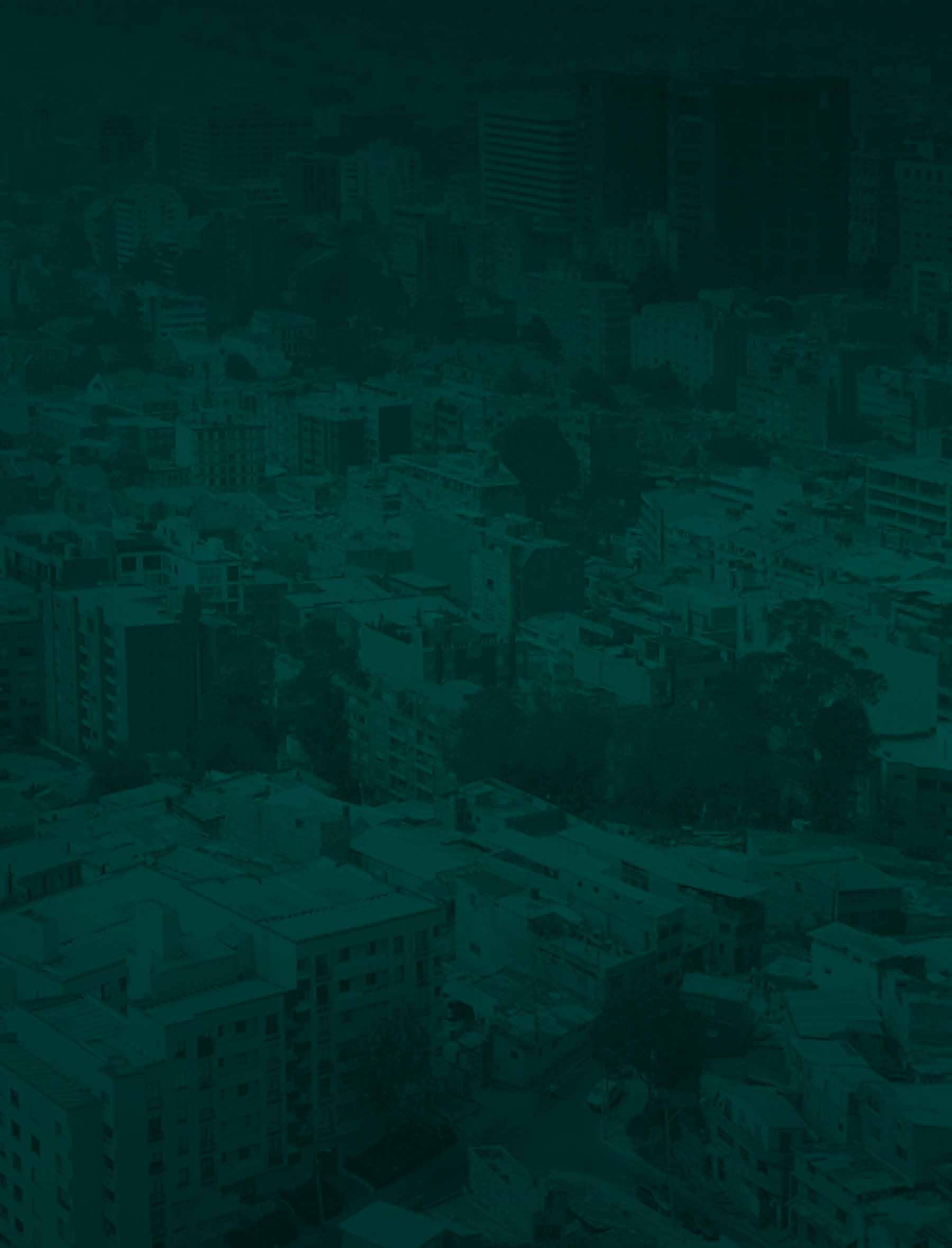
effects and widening digital divides. Also, with so many businesses of the state operating in the energy, transportation, and construction sectors, their social orientation could in principle be tapped to drive decarbonization efforts. And with geopolitical tensions on the rise, state ownership in strategic sectors may seem integral to national de-risking strategies.
But can the business of the state really deliver on these ambitious agendas?
Answering this question
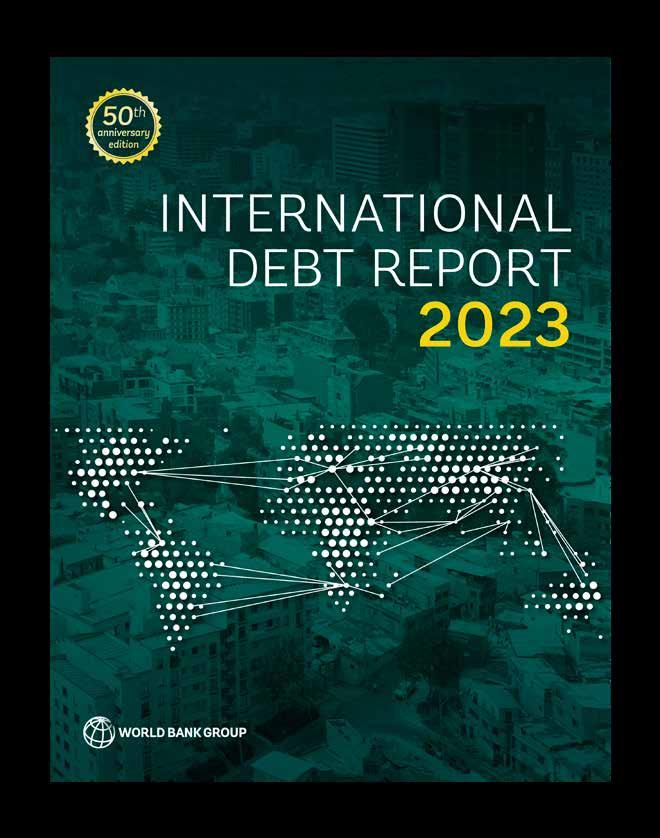

is challenging because data-driven research on state-owned enterprises has been sparse for the past quarter century. This new report aims to help fill this knowledge gap.

21
Working Paper Series
WPS10689
In Most Low- and Middle-Income Countries Pollution Levels Are Higher in Wealthier Areas
WPS10686
Little Nomads: Economic and Social Impacts of Migration on Children
WPS10685
Just Transition: Issues for Central Banks and Financial Regulators
WPS10687
Fiscal Policy, Poverty, and Inequality in a Constrained Environment: The Case of the West Bank and Gaza
WPS10683
The Welfare Cost of Drought in Sub-Saharan Africa
WPS10684
Dysfunctional Family Management: Family-Managed Businesses and the Quality of Management Practices
WPS10682
The Impact of Climate Change on Work: Lessons for Developing Countries
187170
Toward Developing a Mobility and Gender Index
WPS10680
Rural Labor and Long Recall Loss
WPS10681
Leveraging Women’s Views to Influence Gender Norms around Women Working: Evidence from an Online Intervention in Indonesia
WPS10674
Closing the gap: Effect of a gender quota on women’s access to education in Afghanistan
WPS10677
VAT Rate Structures in Theory and Practice
WPS10673
Missing Evidence: Tracking Academic Data Use around the World
WPS10671
Estimating Economic Costs of Unhealthy Diets: A Proposed Methodology
WPS10669
The Importance of Existing Social Protection Programs for Mental Health in Pandemic Times
WPS10668
Costing Disasters: Hedonic Pricing, Neighborhood Effects, and the Nepal Gorkha Earthquakes
WPS10667
Are Global Value Chains Women Friendly in Developing Countries? Evidence from Firm-Level Data
WPS10665
Trade, Outsourcing, and the Environment
WPS10666
COVID-19, School Closures, and Student Learning Outcomes: New Global Evidence from PISA
WPS10663
Could Digital Inclusion Close the Gender Economic Gap in the MENA Region?
22
WPS10664
Labor Market Participation and Employment Choice in Ghana: Do Individual Personality Traits and Gender Role Attitudes Matter?
WPS10659
Connecting People to Projects: A New Approach to Measuring Women’s Employment in the Middle East and North Africa
WPS10661
For Labor or for Divorce? Unilateral Divorce Laws and Women’s Labor Outcomes
WPS10662
Leveraging Big Data to Understand Women’s Mobility in Buenos Aires
WPS10656
Correcting Sampling and Nonresponse Bias in Phone Survey Poverty Estimation Using Reweighting and Poverty Projection Models
WPS10655
How Can Lower-Income Countries Collect More Taxes ? The Role of Technology, Tax Agents, and Politics
WPS10654
Can Effective Policy Implementation Alter Political Selection? Evidence from Female Legislators in India
WPS10652
The Macroeconomic Effects of Cash Transfers: Evidence from Brazil
WPS10653
Unraveling the Factors behind Women’s Empowerment in the Labor Market in Colombia
WPS10651
Shifting Spousal Decision-Making Patterns: Whom You Target in an Agricultural Intervention Matters
WPS10648
What Explains Global Inflation
WPS10650
Spatial Misallocation of Complementary Infrastructure Investment: Evidence from Brazil
WPS10647
Vehicle and Fuel Taxation for Transport Demand Management: Learnings from the Literature through a Development Lens
WPS10645
The Trade-Growth Nexus: Evidence of Causality from Innovative Instruments for Trade
WPS10644
Firms and Climate Change in Low- and Middle-Income Countries
WPS10640
Are Ride-Hailing Services and Public Transport Complements or Substitutes ? Evidence from the Opening of Jakarta’s MRT System
WPS10643
Impacts and Sources of Air Pollution in Tbilisi, Georgia
WPS10641
Government Support and Firm Performance during COVID-19
WPS10642
Fertilizer Import Bans, Agricultural Exports, and Welfare : Evidence from Sri Lanka
WPS10635
Linking Trade to Jobs, Incomes, and Activities : New Stylized Facts for Low- and Middle-Income Countries
WPS10634
Quantifying Economic Impacts of Trade Agreements with Heterogeneous Trade Elasticities
WPS10637
Leveraging Trade for More and Better Job Opportunities in Developing Countries A Framework for Policy
World Bank in India 23
WPS10636
Productive Longevity: What Can Work in Low- and Middle-Income Countries?
WPS10629
Social Insurance for Gig Workers: Insights from a Discrete Choice Experiment in Malaysia
WPS10631
Data Gaps in Microdata in the Context of Forced Displacement
WPS10630
The Valuation of Flexible Work Arrangements: Insights from a Discrete Choice Experiment in Malaysia
WPS10626
Migration, families, and counterfactual families
WPS10628
Is There Still A Role for Direct Government Support to Firms in Developing Countries?
WPS10625
Asking Better Questions: The Effect of Changing Investment Organizations’ Evaluation Practices on Gender Disparities in Funding Innovation
WPS10623
Energy Price Shocks and Current Account Balances : Evidence from Emerging Market and Developing Economies
WPS10622
Are the Poorest Catching Up?
WPS10619
Counting People Exposed to, Vulnerable to, or at High Risk From Climate Shocks — A Methodology
WPS10620
Where Is Poverty Concentrated? New Evidence Based on Internationally Consistent Urban and Poverty Measurements
WPS10616
Updating Poverty in Afghanistan Using the SWIFT-Plus Methodology
WPS10617
Is Natural Capital a Complement to Human Capital? Evidence from 46 Countries
WPS10615
Building Public Support for Reducing Fossil Fuel Subsidies: Evidence across 12 Middle-Income Countries
WPS10611
Forecasting Industrial Commodity Prices: Literature Review and a Model Suite
WPS10613
Too Rare to Dare? Leveraging Household Surveys to Boost Research on Climate Migration
WPS10609
Trade and Infrastructure Integration in Africa
WPS10607
Herder-Related Violence, Agricultural Work, and the Informal Sector as a Safety Net
WPS10606
Containing Tariff Evasion
WPS10603
Digital Payments and the COVID-19 Shock: The Role of Preexisting Conditions in Banking, Infrastructure, Human Capabilities, and Digital Regulation
WPS10602
Making the Low-Income Country Debt Sustainability Framework Fit for Purpose
WPS10601
Quality Regulation Creates and Reallocates Trade
24
WPS10600
Endogenous Institutions and Economic Policy
WPS10597
Using Large Language Models for Qualitative Analysis can Introduce Serious Bias
WPS10596
The Enduring Impacts of a Big Push during Multiple Crises : Experimental Evidence from Afghanistan
WPS10593
Is US Trade Policy Reshaping Global Supply Chains?
WPS10590
The Fine Line between Nudging and Nagging: Increasing Take-up Rates through Social Media Platforms
WPS10585
Tracing Pandemic Impacts in the Absence of Regular Survey Data: What Have We Learned from the World Bank’s High-Frequency Phone Surveys?
WPS10583
Geospatial Analysis of Displacement in Afghanistan
WPS10575
The Labor Market Effects of Disability Benefit Loss
WPS10569
Inequality of Opportunity and Investment Choices
WPS10568
How to Deal with Exchange Rate Risk in Infrastructure and Other Long-Lived Projects
World Bank in India 25
World Bank in India
General information
Email : indiainfo@worldbank.org
Tel: 91-11-41479301/2
Media Inquiries
The World Bank
70, Lodi Estate New Delhi - 110 003
Email: mediaindia@worldbank.org
Tel: +91-11-4147 9220
For more Information
Global: www.worldbank.org
India: www.worldbank.org/in Facebook: WorldBankIndia : @worldbankindia
Rights and Permissions: The material in this work is copyrighted. No part of this work may be reproduced or transmitted in any form or by any means, electronic or mechanical, including photocopying, recording, or inclusion in any information storage and retrieval system, without the prior written permission of the World Bank. The World Bank encourages dissemination of its work and will normally grant permission promptly.






































